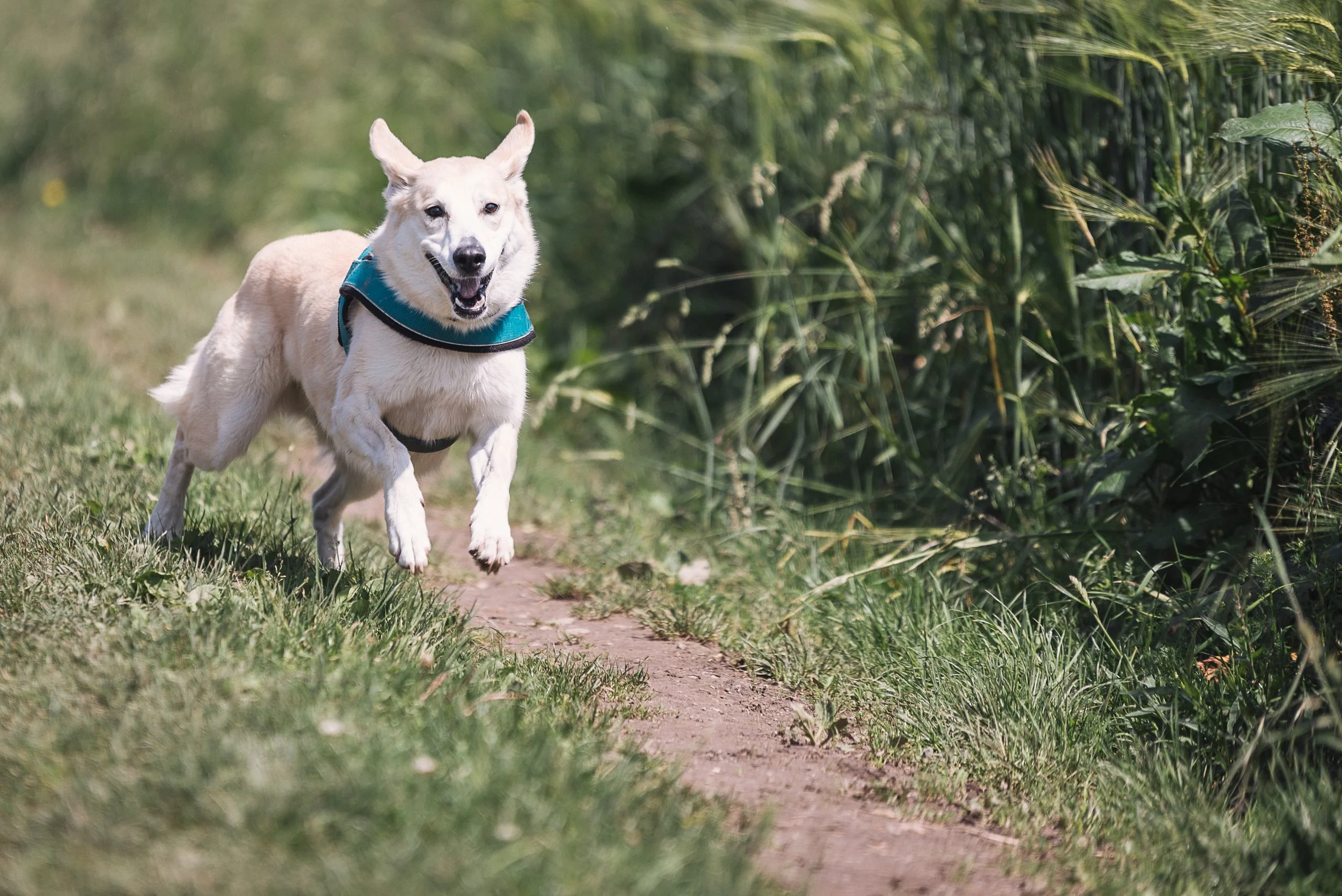My Dog Won't Listen!
/Many of my phone calls involve a client who is frustrated with their dog's lack of focus and seeming inability to focus. Last week I discussed how to form and strengthen a bond with your dog starting from day one. If you haven't done those things yet, go read that, do those things, and come back. It'll make your focus training a million times easier. Today I'll go over how to work on a focus cue as well as the basics of two styles of teaching behaviors: luring and capture.
Luring a behavior involves using a small treat, starting with it at the dog's nose, and moving it in a way that gets the dog to do the behavior you're after. Capture involves using a marker (like "yes," "good boy!" or a clicker) given at the moment the dog naturally does the behavior, and following that marker with a reward. The value of the reward in both cases determines how reinforced the behavior will be - so feel free to use the best stuff that your dog is crazy about. Don't be selfish. I'll go over how to get "focus" both ways.
Luring
This is my least favorite way to teach behaviors to dogs of the methods I'll actually use. Some people like it, and it is easier for the human though it can result in lower ability for the dog if special precautions aren't taken. The steps for luring a focus cue are:
- Bring the treat from your dog's nose to your nose. Mark and reward the dog if they are now making eye contact. Move on to the next step if this is reliable. This should only take a few repetitions at most.
- Add the cue. Give the cue to the dog (for example, say "look!" or "watch me!") before you put the treat to their nose. Get the focus behavior the same as in step 1 above. The timing is important here - say the cue before you lure the behavior.
- After practicing with the cue followed by a lure for several sessions (each session should be fairly short - fewer than 10 repetitions - and followed by a good sized break before another session, see my article on overtraining), start putting a pause between giving the cue and luring. This pause should be 3-5 seconds long or so, and it gives the dog the opportunity to perform the behavior without assistance. If they give you eye-contact, reward them. If they don't, lure it then reward them.
- Continue step 3 until you no longer have to lure and the behavior is performed when the cue is given. Good job! Your dog has acquired the focus cue and you're ready for proofing, which I'll cover in a future blog.
Capture
Capture is my favorite way to teach behaviors that dogs already know how to do, but don't necessarily know how to do on request. For example, every dog is born knowing how to lay down, but they are not born knowing to do that when you say "down." Capture requires the use of a marker, discussed above. The steps for capturing a focus behavior are:
- Mark and reward your dog every time they give you eye contact. You could do this throughout the day, or you could set them up for the behavior by tossing them a free treat. In the latter, they'll usually look at you as soon as they eat it as though to say "got any more?"
- Consistently capturing a behavior will cause the dog to offer that behavior. It's almost like reading their mind, watching them figure out "if I do this, I can make you give me treats, right?" When the dog is offering you eye-contact to attempt to earn a goodie from you, you're ready to add your cue (as with luring, you can choose whatever cue you want). The timing is important - say the cue before the dog performs the behavior. You might reward one offered focus by tossing the treat on the floor, making your dog look away from you for a moment. This opens you to be able to give your cue before they look, then mark and reward when they do.
- After several sessions using the cue, you can quiz your dog to see if they've acquired the cue. To do this, give the cue when they're not expecting it. If they perform the behavior, congrats! If not, continue performing sets to help them build the association between your cue and your behavior. Once they have acquired the cue, you're on to proofing!
Both capture and luring can yield good results. Though I have a preference for capture, there are good arguments I've heard for both so I'm willing to call it a matter of personal preference. Building a strong focus cue will help in ability to achieve other behaviors. As always, if you're working on a behavior and having trouble, get professional help!
Benjamin is the owner of Good Doggy Saratoga. You can follow him on Facebook.
If you liked this article, please like and share below. You can also subscribe to receive blog updates in your email.





